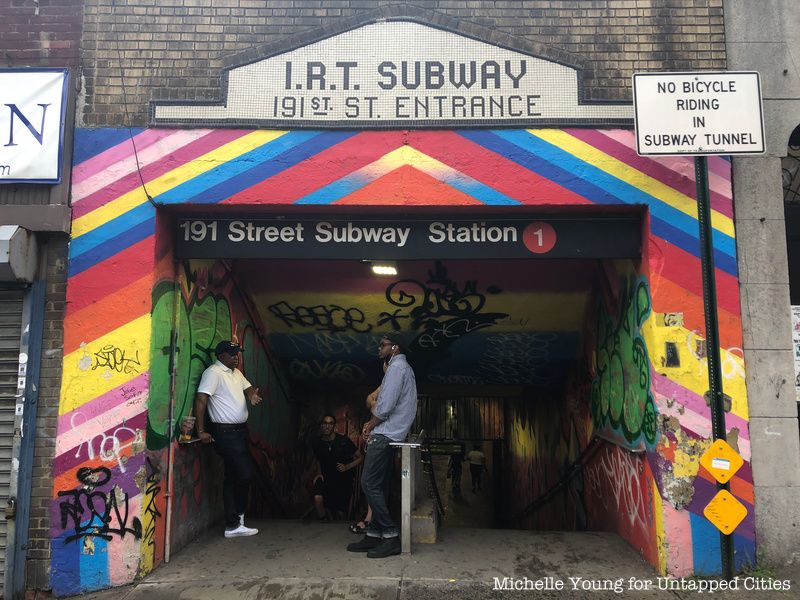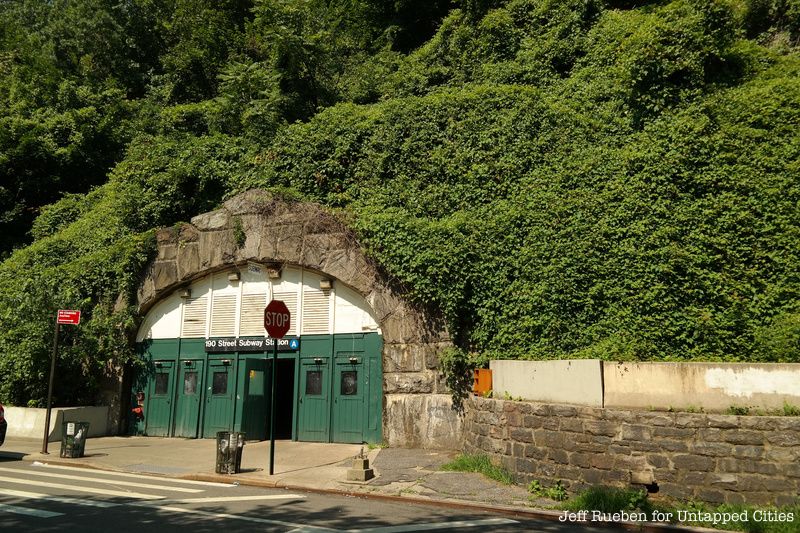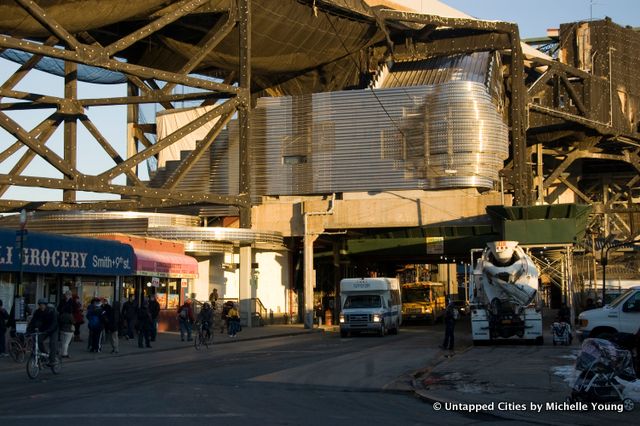See the New Times Square New Year's Eve Ball Up Close
Find out how you can take home a piece of the old New Year's Eve ball!


What’s the deepest subway station in New York City? This is a topic of some healthy debate in transit forums, with some conflicting claims between blogs and websites. Part of the confusion stems from the standard for depth, whether measured from street level or from sea level, but from our research, this appears to be the consensus:

In Washington Heights, the 191st Street stop along the 1 line is considered the deepest at 180 feet below street level, according to the MTA. This is one of the stations that still has full-time elevator operators, since the elevators serve as the main access to the platform. These elevators also have a greater tendency to break down, says the The New York Times (yikes). In May 2015, the tunnel was decorated by street artists in partnership with the New York City Department of Transportation
The tunnel was recently used as a filming location for In the Heights.

At 140 feet below street level (according to Wiki and our source, formerly with NYC Transit), this station lies under Fort Tryon Park and Hudson Hill, a 10-minute walk from The Cloisters.

While the long escalators at Lexington Avenue/63rd Street give the impression of going far, far below, this station and the one on Roosevelt Island, are not as steep as those in Upper Manhattan. They’re at about 100 feet below street level according to NYCSubway.org and Wiki). But if measured from sea level, Roosevelt Island’s is deeper than those in Upper Manhattan, according to this forum. The Lexington Avenue stop is also part of the Second Avenue Subway construction, and will feature four new subway entrances as part of the Q line extension.

The highest subway station is at Smith and 9th Street in Brooklyn, located 88 feet above street level, according to the MTA. Smith and 9th Street also has some fun nautical chart art on all of its windows.
The New York City subway system wasn’t the first in the world, but as this NPR podcast highlights, the city had the unique “geographical difficulties of building a subway on a crowded and rocky island.” According to Vivian Heller, author of The City Beneath Us, the rock in upper Manhattan is “treacherous and unstable.” Instead of the “cut and cover” method of building subway tunnels, in this area, the ground had to be dynamited. Skilled labor was needed to build underground in this challenging terrain, so workers were brought in from the coal mines in eastern Pennsylvania, silver mines in Colorado, and even diamond and gold miners from South Africa.
According to Clifton Hood, author of 722 Miles, what has truly been lost in the history of the subway is the story of the people who built it. “Most people who ride the subway don’t give any single thought to the fact that real people actually built it and in some cases died or were injured.”
Get in touch with the author @untappedmich.
Subscribe to our newsletter